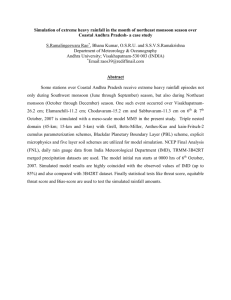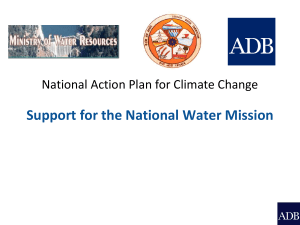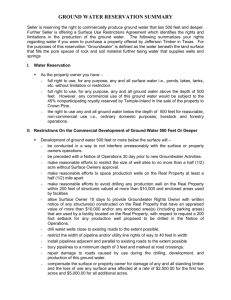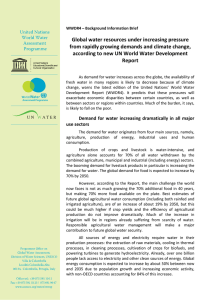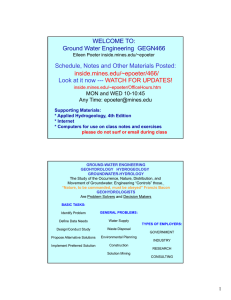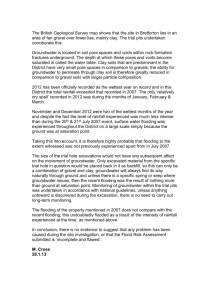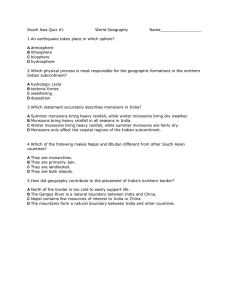Water Issues In India
advertisement
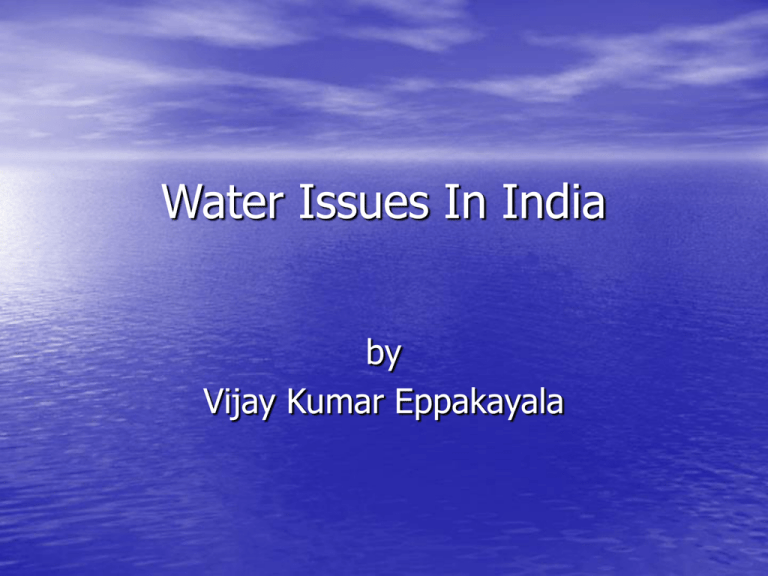
Water Issues In India by Vijay Kumar Eppakayala India on the globe Ancient days of Civilization • Indus Valley Civilization ( 3300 – 1700 BC) Current days • Area: 3,287,590 sq.km (7th largest) • Population : 1.12 billion (2nd in the world) • • • • • (70% being rural) Population Density : 336 persons/sq. km. Largest democracy in the world Literacy rate : 64.8% Per capita income : US$ 707 25% of population is below poverty line Climate • • • • • Four official seasons Winter ( January – March) (50-77oF) Summer (March – June) (90-104oF) Rainy or Monsoon (June- September) Post Monsoon (October – December) Most of the country’s rainfall is due to the monsoons. Monsoons and Rainfall River basins and conflicts Water Scarcity, Demand and Usage Water Usage and Demand Of the total water usage 92% - Agriculture 5% - Domestic 3% - Industrial The overall water demand is supposed to increase from 552BCM to 1050 BCM by 2025 Average urban water usage: 135lit/person/day Demand from the industrial and domestic sectors is expected to increase with the growing population, urbanization and industrialization 86% of population has access to improved water use Only 33% of population has access to improved sanitation House hold and Drinking water (Wells, Bore wells and Taps) Some stats on water supply duration None of the 35 Indian cities with a population of more than one million distribute water for more than a few hours per day No city has a continuous water supply Reasons for water scarcity Rising demands of increasing population Over extraction of easily available surface and groundwater resources Increasing human impact on the environment and contamination of available water sources Changing climate Waste water and Sanitation Waste water contd.. • Cities account for a production of 29,000 million litres of • • waste water but there is only a management capacity for 6000 million litres. More than 300 cities with a population of and above 100,000 are completely without sewers. As of 2003, it was estimated that only 30% of India's wastewater was being treated, with the remainder flowing into rivers and groundwater. • The sewer system, in the places they are present, are in seriously bad condition and need maintenance, replacement in addition to a great expansion to keep up with the pace of the growing urbanization. Some more facts • All the run-off from storm water is discharged as sewage. • Storm water management was never considered as a serious • • • • • issue until 2000. Advanced water treatment technologies are only limited to highly developed urban cities. All the major 18 rivers in India were polluted due to discharges from agricultural, domestic and industrial uses because the effluent is not pre-treated prior to discharge. Groundwater is contaminated and depleted day by day. Diarrhea alone causes more than 1600 deaths daily. 21% of the communicable diseases are water related. Conclusions India needs.. • Efficient water management strategies and techniques (Conservation, Reuse and Recycle) • Awareness in people regarding water management • Improved water treatment technologies and access to good sanitation and drinking water • Rainwater harvesting (capture and store rainfall and use if efficiently) • **** Water and environmental related classes to be offered at the college and university level in all educational institutions. Thank You


